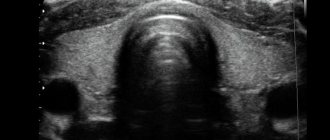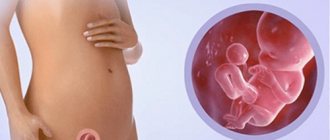Mantoux is not done often - the standard schedule involves diagnosing tuberculosis once a year. Only clear medical indications are the reason for increasing the number of samples per year to 2-3. If BCG was not given in the maternity hospital according to the calendar, then after 2 months Mantoux is first performed and only after that, if the result is negative, can vaccination be performed.
The Mantoux schedule is observed once a year for both preschool and school-age children. For adults, the test is performed with the same frequency until the age of 16, then the manipulation can be performed once every few years and only at the request of doctors. From the age of 35, the procedure becomes impractical.
How often do preschoolers make Mantoux, how many times a year?
Mantu is given to preschool children once a year. The first vaccination against tuberculosis is given in the maternity hospital on the 3-5th day of the baby’s life (depending on the general condition of the newborn, complications during childbirth and other indicators).
The Mantoux test is performed no earlier than 12-13 months after BCG, and it is rarely perceived by doctors as informative - the antibodies produced as an immune response to the vaccine are still active in the child’s body.
Subsequent tests are carried out every year - in the 2nd, 3rd and so on.
Therapeutic x-ray of the lungs - what is it?
Therapeutic X-rays of the lungs are used by oncologists for radiation therapy of the disease. With its help, pathological cells are destroyed. This type of X-ray diagnosis can be done as often as needed to fight tumors. Even a child undergoes a medical examination, since cancer is a life-threatening pathology.
How many times a year are lung x-rays taken?
Telling how many times a year X-rays of the lungs are taken, we remind readers that a preventive examination of the lungs should be performed once every 12 months. In this case, the total human radiation dose should not exceed 1 mSv.
Children under 18 years old are given a diagnostic x-ray if the disease is suspected, but fluorography is contraindicated.
Some doctors are of the opinion that X-ray diagnostics are indicated for the patient as many times as pathology is detected in the image. This opinion is not rational, since most diseases of the chest organs are determined by other less dangerous methods - auscultation, ultrasound examination, laboratory blood test from a finger or a vein.
It is not rational to perform x-rays a large number of times while the patient’s condition is dynamically improving. Such exposure is absolutely unnecessary. It’s a different matter when there is a suspicion of lung cancer.
It is necessary to take photographs if the disease is suspected and there is no progress in the treatment of the pathology.
Digital photo of a chest x-ray. The picture is normal, with the exception of a slightly raised right dome of the diaphragm (against the background of an enlarged liver)
How often to do fluorography
How long can fluorography be done per year? How much does the doctor say? No. Preventive X-ray examination is performed only once a year. If pathological symptoms are detected in a digital photo, diagnostic radiography is performed in frontal and lateral projections. It has high resolution and allows you to see shadows more than 5 mm in diameter. Such formations appear in the lungs with the following diseases:
– Infiltrative tuberculosis; - Pneumonia; - Cancer tumor; – Forming abscess or cyst.
The patient is sent for a chest x-ray even when the examination results are in doubt.
Fluorography is done according to the decree of the Ministry of Health - once a year. More frequent research is not rational. They will only lead to unnecessary radiation exposure to the patient.
The main advantages of X-rays over the “flux”:
Fluorography has low resolution and accuracy; The method does not allow one to form an idea of the state of small formations of the lung tissue and heart.
Mantoux reaction: when is it done and how often in schoolchildren
The Mantoux test is performed with a certain frequency and for schoolchildren – once a year. They try to carry out this manipulation en masse, so it is possible to reduce the frequency of tuberculin administration, but in any case, at least 6 months must pass between procedures.
From the age of 14, the Mantoux test may not be performed at the request of the parents; diagnostics can be carried out by performing fluorography.
We recommend reading about the nuances of staging Mantoux per year. From the article you will learn about when Mantoux is prescribed per year, how it is tolerated, what complications there may be, assessing the results of the Mantoux test, and how to measure the papule yourself. And here is more information about the peculiarities of holding Mantoux at 15 years old.
How often can you make Mantoux?
You can make Mantu often - 2-3 times a year, but only if there are prerequisites for this:
- the papule at the site of tuberculin injection increases from year to year;
- the child is constantly in contact with tuberculosis patients;
- the child is likely to have HIV infection (for example, both or one of the parents are sick).
A schedule of 2 Mantoux tests per year is also established for those children who were not given BCG in the maternity hospital . It is also necessary for some other categories of small patients to monitor the baby’s health status in relation to the presence/absence of the tuberculosis pathogen:
- with diabetes mellitus;
- with frequently recurring colds and viral pathologies of the respiratory tract;
- with diagnosed blood diseases;
- with constant elevated body temperature to subfebrile levels of unknown origin;
- with diagnosed/confirmed systemic pathologies.
The decision to perform the Mantoux test more frequently is made by the pediatrician and phthisiatrician.
Watch this video about what the Mantoux test is and why it is important to carry it out among children:
Course massage
I hope everything is clear with the course massage, in this case we do 10 or more procedures every day (or every other day, which is more often practiced).
The result of the massage course
With regular massage sessions, positive changes occur at all levels of body systems. Such changes are cumulative. The results obtained “yesterday” (from the previous procedure) are better consolidated and prepare the “ground for tomorrow” (for the next session).
This cumulative effect makes it possible to more effectively achieve your goal. Those. course massage allows us to effectively consolidate the achieved results obtained, for example, in the 4-5th procedure, and improve existing indicators of health and well-being, in addition, the body will reach a new level of functionality.
When to do a massage course
If you haven’t had a massage for a long time (at least 3 months), then for any task it is better to start with the course.
How often is Mantoux given to adults, and up to what age is it done?
Mantoux is not often given to adults, but only according to indications:
- the doctor has good reason to suspect the patient has extrapulmonary tuberculosis;
- the patient has recently undergone radiotherapy, radiography or any other radiation exposure;
- a person undergoes long-term treatment with certain medications (glucocorticosteroids, immunosuppressants).
After the age of 16-18 years, the Mantoux test is done extremely rarely, unless there are clear indications for it. After reaching the age of 35, such manipulation is performed only at the request of doctors.
Most often, Mantoux is given to those adults who are at risk - they are in constant contact with patients, live in a region that is unfavorable specifically for the incidence of tuberculosis, work in correctional colonies, and so on.
Due to age-related changes in the human body, the Mantoux test is considered to be of little information; it is advisable to rely on fluorography data in diagnosis.
In what cases is radiography prescribed?
According to the radiologist, if the patient suspects any pathology or existing disease, the doctor makes the decision to conduct an x-ray. “Clinical expediency is determined by the doctor who is treating the patient, the clinician, and a diagnostician always comes to help him. They decide to refer the patient for research if without this it is impossible to help the person and his disease progresses,” says Kharlamov.
According to the specialist, if there is trust between the attending physician and the patient, the quality and results of treatment will always be better. “The patient can and should ask questions about why he is being examined and whether it is really necessary. The clinician understands the expected dose volume and usually tries to reduce it as much as possible,” explains Kharlamov. — Modern developments in radiation diagnostics are aimed at reducing the minimum dose load and increasing the information content of the data obtained. The Moscow Lung Cancer Screening project is indicative: patients undergo low-dose computed tomography of the lungs (CT is part of a family of types of studies that are based on X-ray radiation). Previously, fluorography was used for this, but the information content of CT is orders of magnitude higher, and within the framework of this project, the problem of reducing the dose load on the patient during screening was solved in comparison with conventional CT while maintaining the inherent information content of CT.”
When can you take a test?
The test can only be done on an absolutely healthy child - this fact is established by the doctor during a preliminary examination of the child as part of the preparatory stage. In some cases, a medical diversion from tuberculin administration may be placed:
- elevated body temperature, regardless of the presence/absence of signs of disease;
- runny nose, even in the initial stage of its development;
- cough of any type - dry, wet, infrequent, paroxysmal;
- dermatological diseases in the acute phase of their course;
- problems in the functioning of the digestive system, regardless of the nature of the origin.
These conditions are conditional contraindications; the Mantoux test is performed after the child has fully recovered. But there are also pathologies in which the administration of tuberculin for diagnostic purposes is strictly contraindicated:
- epilepsy;
- malignant neoplasms;
- bronchial asthma;
- allergy to any irritant;
- child's age up to 1 year;
- confirmed human immunodeficiency virus.
Is it possible to do Mantoux and BCG at the same time according to the vaccination calendar?
The vaccination schedule does not imply the simultaneous performance of the Mantoux test and BCG. According to the regulations, if a child is not given BCG for some reason in the maternity hospital, then the procedure can only be performed after the Mantoux test has been performed.
This rule applies to cases where the BCG vaccination was not given until the child was two months old.
Vaccination after tuberculin administration should be carried out no earlier than 3 days and no later than 2 weeks. A prerequisite is that the Mantoux result must be unconditionally negative.
Deworming of bitches
Males can be given anti-parasite medications at any time. With bitches things are different.
Estrus and pregnancy period
It is recommended that dogs of both sexes undergo deworming 10 days before mating: females - 10–15 days before the expected date of estrus.
This significantly reduces the likelihood of infection in future offspring. After mating, anti-parasite medications can no longer be given. Pregnant dogs are not wormed. Toxic substances in anthelmintic drugs can negatively affect the development of offspring in the womb.
The period of pregnancy and lactation is a direct contraindication to the use of anthelmintic drugs. In case of urgent need, the expulsion of worms is carried out 2 weeks after birth.
On what days are Mantoux performed?
Most often, the Mantoux test is performed on certain days - Monday and Tuesday, which allows you to evaluate the results of tuberculin administration before the onset of the weekend (after 72 hours). The fact is that weekends carry the risk of violating the rules for caring for the “button” - a child can visit a cafe with his parents and consume a known allergen, it is possible to go to a pool or water park, or visit guests. And these situations can provoke stress, which will give unreliable results.
How long does it take to check the reaction?
The reaction to the administered tuberculin is checked no earlier than 72 hours from the test. Neither sooner nor later does it make sense to take measurements of papules or redness - the data will be distorted, which will entail the need for revaccination or an extensive examination by a phthisiatrician.
We recommend reading about why Mantoux is placed before BCG. From the article you will learn how many days after BCG is given after Mantoux, when the vaccination cannot be done, and whether Mantoux can be done without BCG. And here is more information about whether it is necessary to make Mantoux.
Mantoux is given to children of preschool and school age with a certain frequency. A clear schedule minimizes the risks of obtaining distorted results and developing side effects. Typically, the test is performed once a year, but at the discretion of the doctor, the frequency can be increased.
Fluorography as an x-ray examination
During the passage of FLG, X-rays in an amount of 0.05 millisievert are passed through the human body. This is a tiny dose within the permissible radiation exposure limit, which can help save your health. Using a fluorographic examination of the chest, medical specialists diagnose:
- severe infectious lung disease (tuberculosis);
- inflammation of the lung tissue (pneumonia);
- lungs' cancer;
- inflammation of the pleural layers of the lungs (pleurisy);
- pathologies of the cardiovascular system.
Based on the images taken, the doctor prescribes treatment. Timely initiation of therapy sometimes saves a person’s life, and if tuberculosis is diagnosed, it allows one to protect other people from infection by isolating the patient.
The advantages of the procedure include its low cost, and many district clinics do it for free. In addition, data is stored on digital media for a long time, requiring little time investment. The study lasts three minutes, and the decoding of the indicators takes no more than 24 hours. Sometimes it is very important to know how long it will take for the result to be ready. The advantages also include the absence of pain, high accuracy of indicators, and no need for preliminary preparation of the patient.
Photo of fluorography of a healthy person - a picture of the lungs within normal limits











